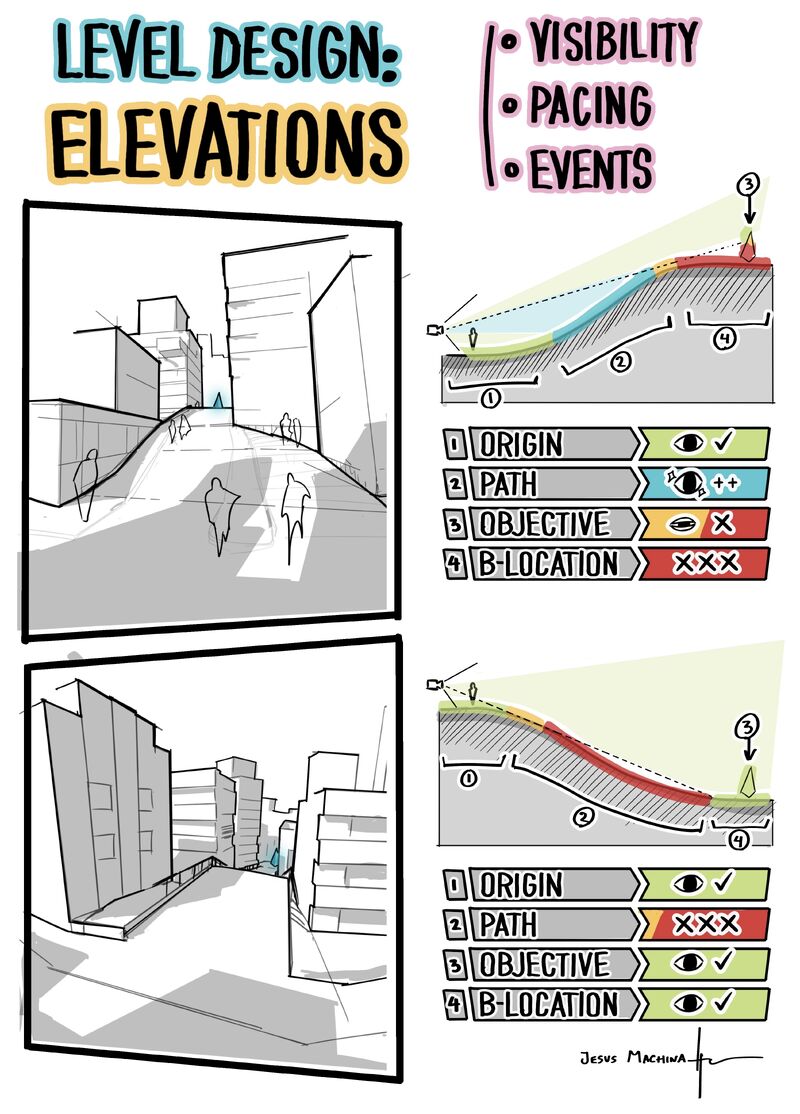Elevations & Player Visibility
𝟎𝟓 - 𝐄𝐥𝐞𝐯𝐚𝐭𝐢𝐨𝐧𝐬 𝐚𝐧𝐝 𝐏𝐥𝐚𝐲𝐞𝐫 𝐕𝐢𝐬𝐢𝐛𝐢𝐥𝐢𝐭𝐲 In previous posts about navigable levels, I've often been asked whether elevation changes and ramps significantly affect player's perception. The short answer is yes; ramps are also a design tool! By using ramps, we can guide the player's attention, control their visibility, and carefully pace their movement through the environment. This helps us tell a story through the space itself. In the sketch I'm sharing today, I illustrate two scenarios (extreme case examples) where elevation is used to craft different gameplay dynamics.In simple terms, the key elements of a route that we see in these examples are:- Where the player is (𝐎𝐫𝐢𝐠𝐢𝐧),- Where they need to go (𝐎𝐛𝐣𝐞𝐜𝐭𝐢𝐯𝐞),- The surrounding navigable areas near the objective (𝐋𝐨𝐜𝐚𝐭𝐢𝐨𝐧),- And the path to reach the objective (𝐏𝐚𝐭𝐡).𝐈𝐧 𝐭𝐡𝐞 𝐟𝐢𝐫𝐬𝐭 𝐬𝐜𝐞𝐧𝐚𝐫𝐢𝐨, the objective is positioned beyond an upward […]








